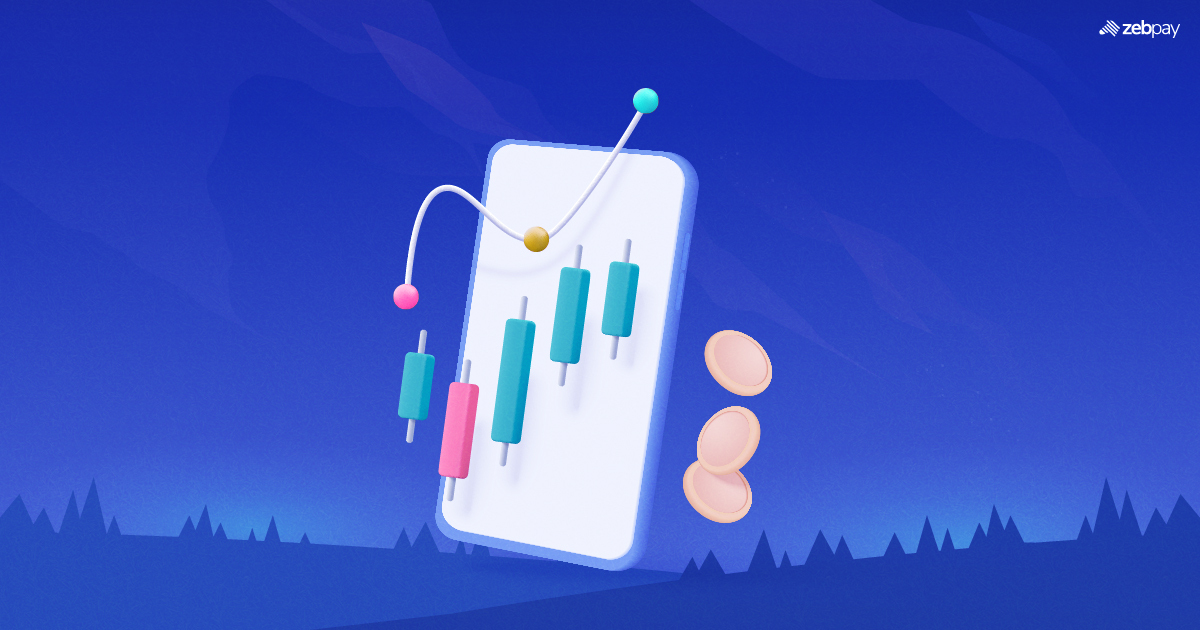Trading crypto during the day involves rapidly starting and ending positions before the day’s end. Day traders hope to gain from market ups and downs by analyzing price moves, buying low, then selling high, or selling high to cover lower costs. The aim is to earn income from price shifts throughout the trading day.
What are Intraday Indicators?
Traders use top indicators for intraday trading strategies. These tools help analyze trends, find entry and exit points, and manage risks. Many factors determine the best indicators for day trading. Moving averages spot trends and reversals. RSI and stochastic oscillators signal overbought or oversold conditions. Bollinger bands identify volatility and breakout opportunities. Fibonacci retracements are crucial too. In the fierce crypto trading world, traders utilize these indicators to enhance decision-making and boost profitability chances. In the following section, we will explore some of the best indicators for intraday trading.
The Best Indicators for Intraday Trading
Moving Averages
Moving averages smooth price changes on charts by averaging prices over time. They use different price data and timeframes, like daily, weekly, monthly, or shorter periods. There are three main types: simple moving average (SMA), exponential moving average (EMA), and weighted moving average (WMA). Choosing the best moving average for intraday trading depends on various factors. The period of the average matters, as it affects how well it works for different time frames. Also, considering chart patterns and periods is important when using moving averages for intraday trading.
Read more: How To Use Moving Averages For Crypto Trading
RSI
The RSI (Relative Strength Index) finds the ratio of price increases to price decreases. It makes this ratio into a 0-100 scale. An RSI of 70 or higher could mean an asset is overbought. Prices rose more than expected. An RSI of 30 or lower could mean an asset is oversold. Prices fell more than expected. Using RSI when day trading gives valuable insight. The default 14 periods are common among swing traders. However, some intraday traders prefer other RSI settings. They may lower the timeframe or adjust the RSI period. This makes the oscillator more sensitive and gives more trading signals. Day traders choose settings based on their preferences and market conditions.
Read more: What is the RSI Indicator
MACD
Moving Average Convergence Divergence, known as MACD, tracks momentum and trends. It compares two moving averages of prices. The formula takes the 12-period Exponential Moving Average (EMA) and subtracts the 26-period EMA. Standard settings use three numbers: 12 for the faster EMA, 26 for the slower EMA, and 9 for the signal line’s 9-period EMA of MACD.
While defaults often work, changing numbers to match your day trading strategy could help. MACD settings’ effectiveness depends on the patterns used. Day traders can find optimal MACD settings by testing different EMA and signal period combos. Experimenting with ideal numbers for your day trading approach maximizes MACD’s usefulness.
Bollinger Bands
Bollinger Bands, developed by John Bollinger during the 1980s, are a widely adopted tool among traders for market analysis. These bands consist of three components, namely:
- The middle band reflects a simple moving average (typically set at 20 periods).
- The upper band is calculated as the period plus N standard deviations.
- The lower band is derived from the period minus N standard deviations.
The middle band acts as a reference point for both the upper and lower bands. Day traders commonly apply Bollinger Bands with a 20-period moving average coupled with 2 standard deviations to their trading strategies.
Stochastic Oscillator
The stochastic oscillator works like a gauge to measure an asset’s momentum. It compares the closing price to a range of prices over a specific period. The main goal is to find signals that show when the asset is overbought or oversold. This helps traders decide when to buy or sell. The oscillator’s values range from 0 to 100. Among day traders, the slow stochastic oscillator is popular. It reduces the risk of entering trades based on false signals.
Read more: What Is The Stochastic Indicator
Fibonacci Retracements
The Fibonacci retracement tool uses math from the Fibonacci sequence. It utilizes percentage lines to mark support and resistance levels. These lines help crypto traders identify reversals and key price points.
Retracements show how much a prior price move reversed. They’re based on the last price move, with common levels like 23.6%, 38.2%, 61.8%, and 78.6%. Apply the tool between any major highs and lows. When day trading signals a short-sell opportunity within a range, the Fibonacci level confirms the signal. Also, these levels highlight zones where traders should watch for opportunities.
Read more: What is Fibonacci Retracement
Volume Weighted Average Price (VWAP)
The VWAP helps traders see an asset’s price trend and value. It shows the average price in one trading day. The VWAP gets reset each new trading session. It considers both an asset’s volume and price changes during the day. The VWAP is a useful technical analysis tool. It gives valuable insights into a crypto asset’s pricing.
Read more: 10 Must Have Indicators For Successful Crypto Trading
Common Mistakes to Avoid When Using Indicators
Here are some frequent mistakes intraday crypto traders should avoid:
- Lack of patience: A major pitfall is overlooking the importance of being patient and making logical decisions. Intraday crypto traders often rush due to limited time and trading sessions. This leads to unavoidable errors. Given the narrow window for closing positions, impatience can result in significant losses.
- Not using stop-loss orders: Stop-loss orders are crucial for risk management. Traders who neglect to set up stop-loss orders often encounter substantial losses.
- Emotional trading: Intraday trading demands a disciplined approach. Traders should not let emotions cloud their judgment, especially when facing losses. It’s essential to detach oneself from the emotional impact of profits and losses. This avoids impulsive decisions and the temptation to quit trading altogether.
- Frequent strategy changes are problematic. Once a strategy is chosen, it’s vital to stick with it rather than switching after initial setbacks. Consistency is key. Constantly changing strategies disrupt progress. It requires patience and practice to effectively master each method. Changing too often during trading is unwise.
Read more: Crypto Trading Strategies
Conclusion
Crypto traders need to have a clear view of how the market moves when trading during the day. You also have to adapt as things change. There’s no perfect way to choose the best signs for trading during the day. But some signs help traders navigate their decisions. Moving averages, MACD, relative strength index (RSI), stochastic oscillator, Bollinger bands, and Fibonacci retracements are commonly used signs for trading during the day.
Yet, no single sign alone ensures success when trading during the day. Traders must carefully study many signs. They also need to think about current market conditions. And they must combine these signs with smart risk management plans. Only then can traders make wise choices when trading crypto during the day.
If you found this blog to be useful, do share it with other like-minded crypto enthusiasts. Click on the button below to begin your crypto trading journey using ZebPay.







